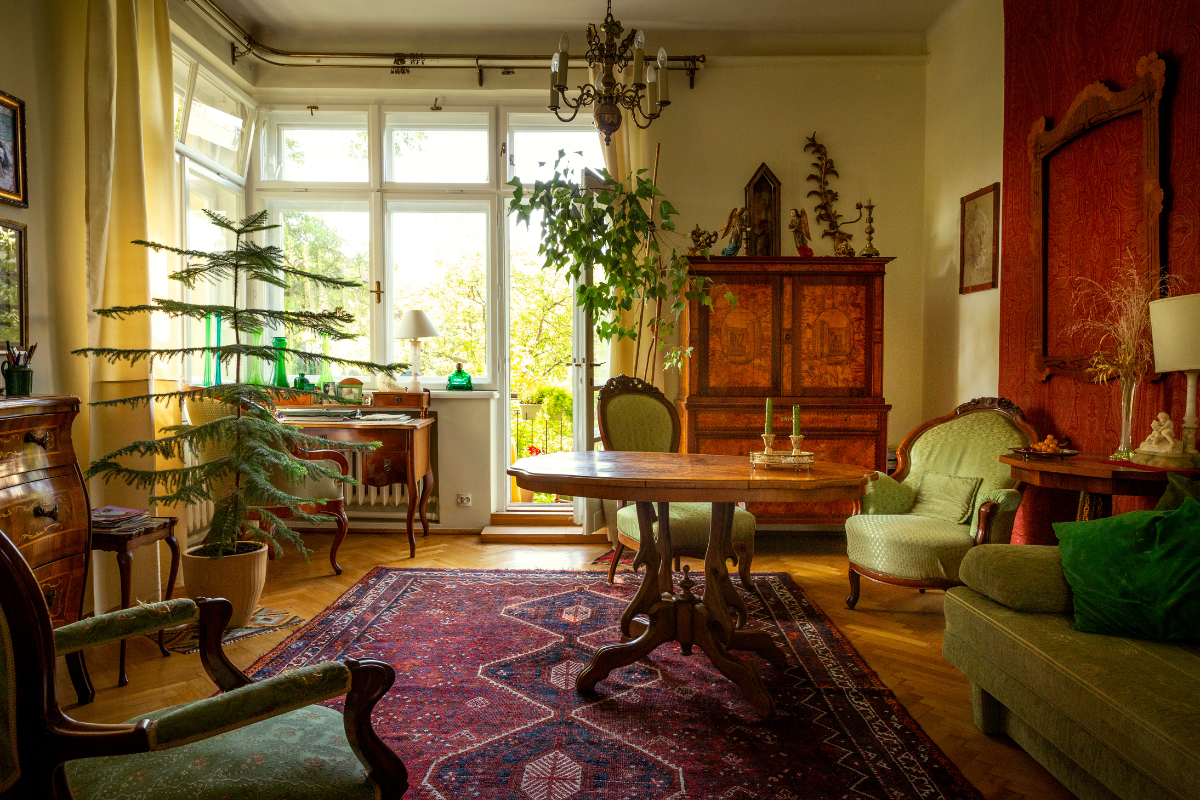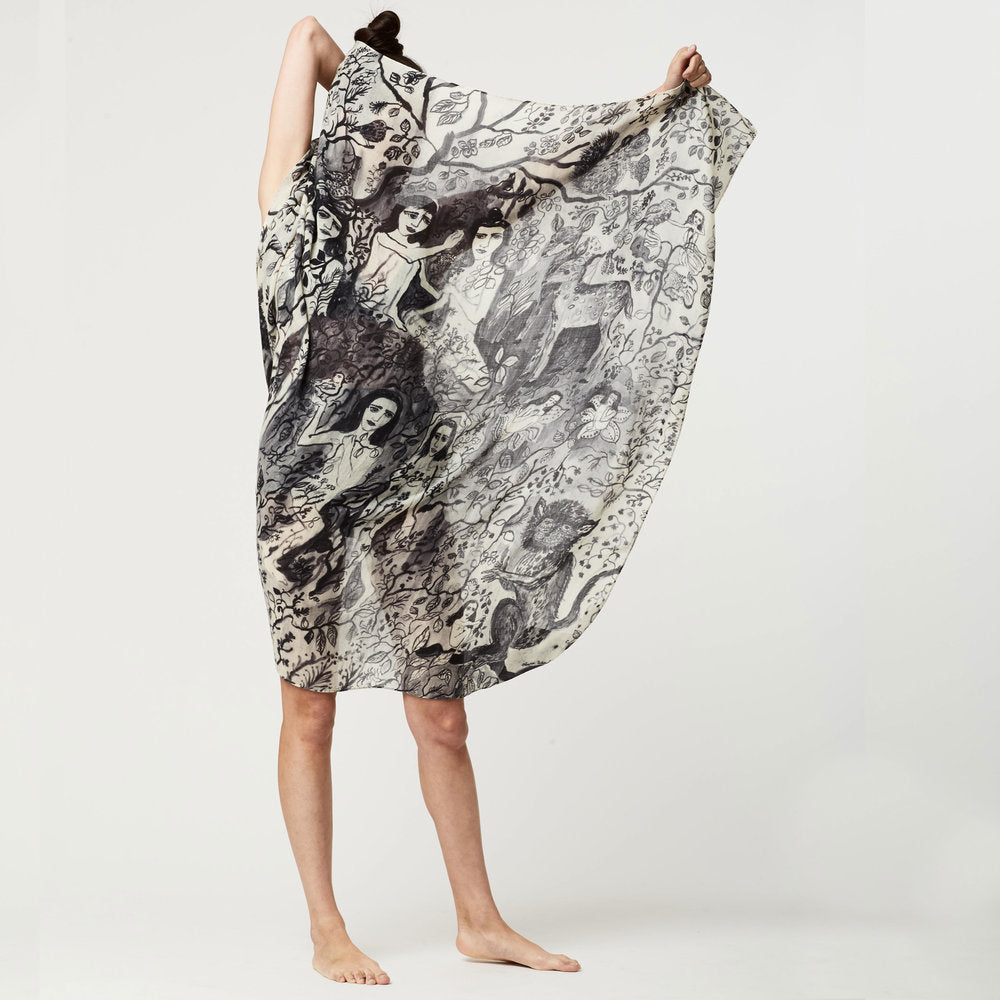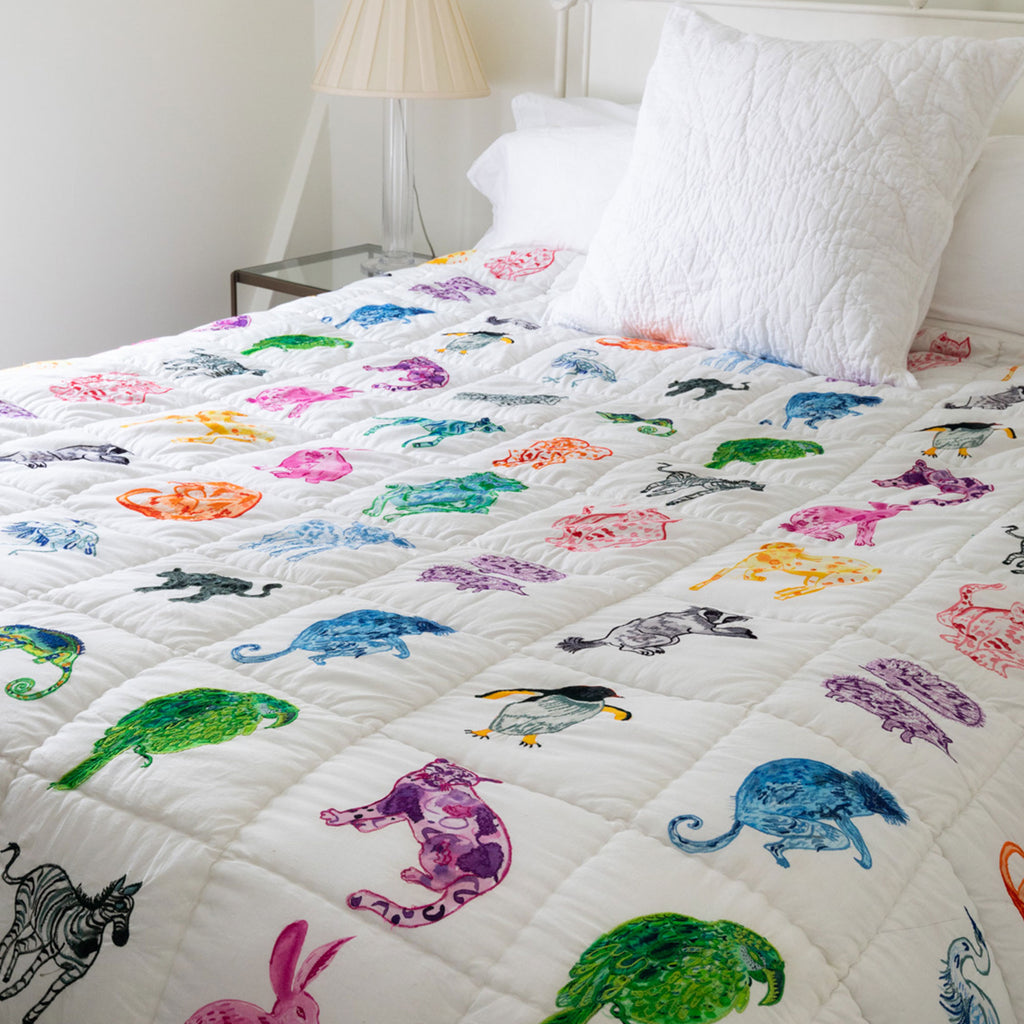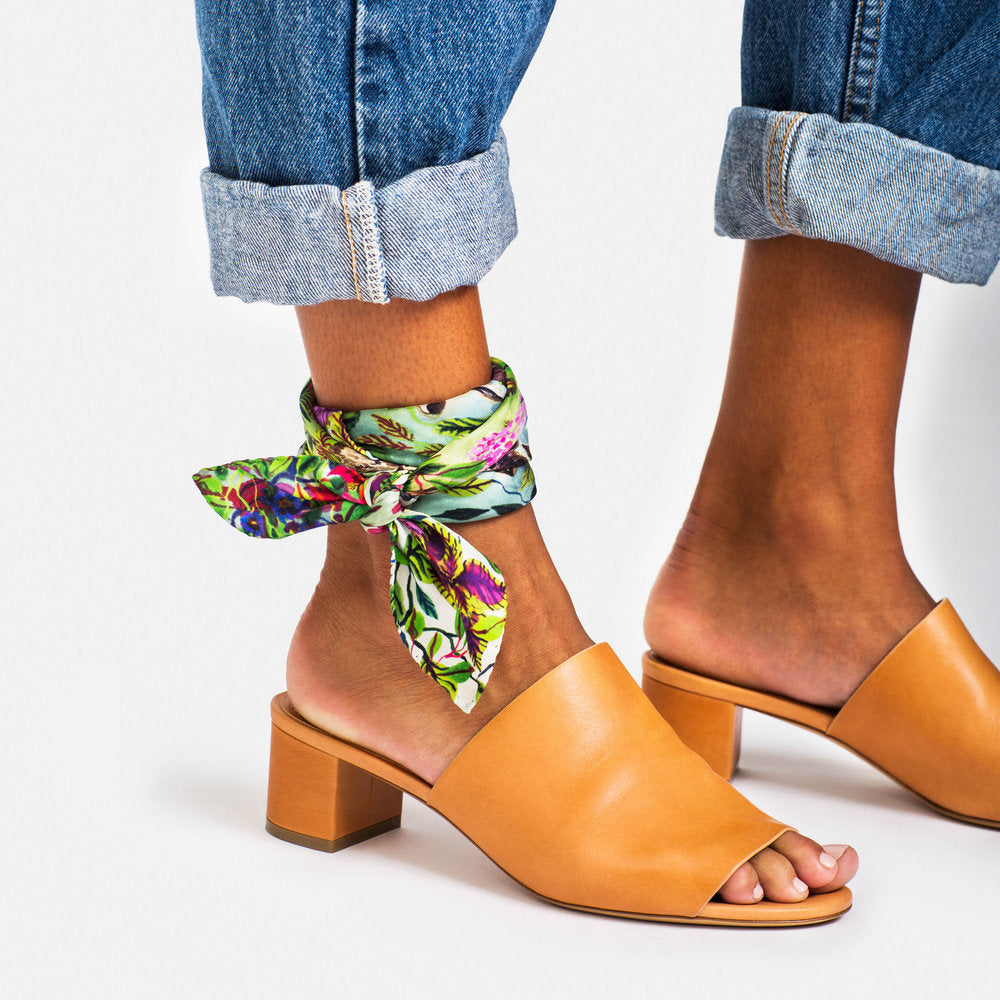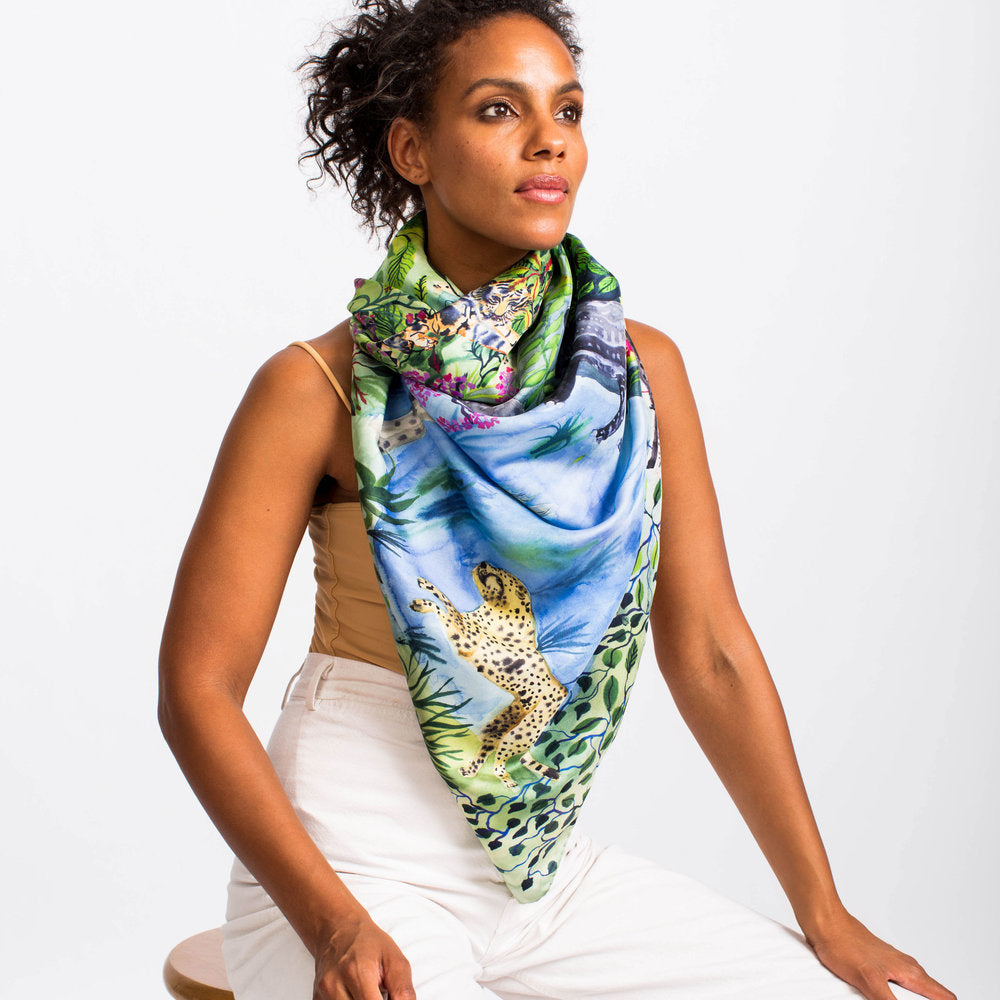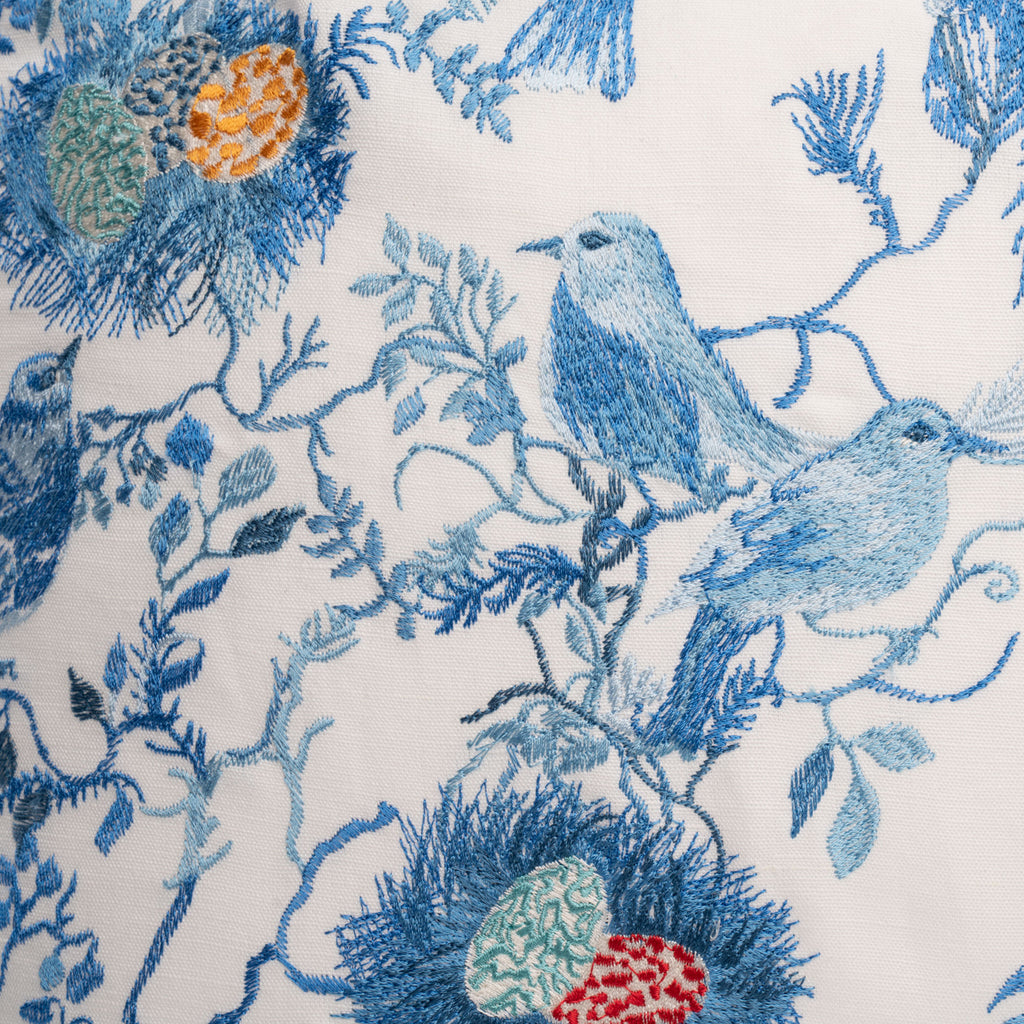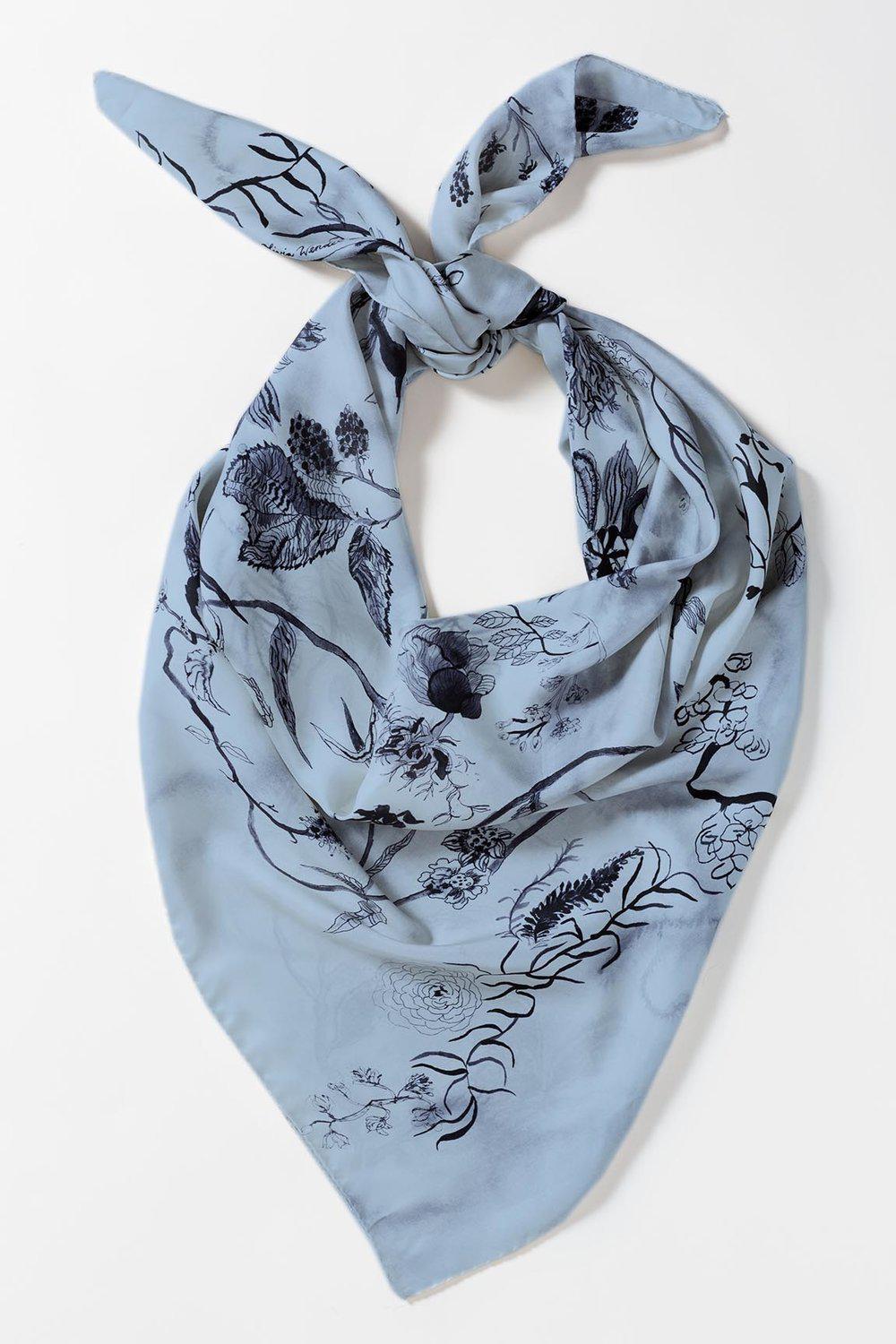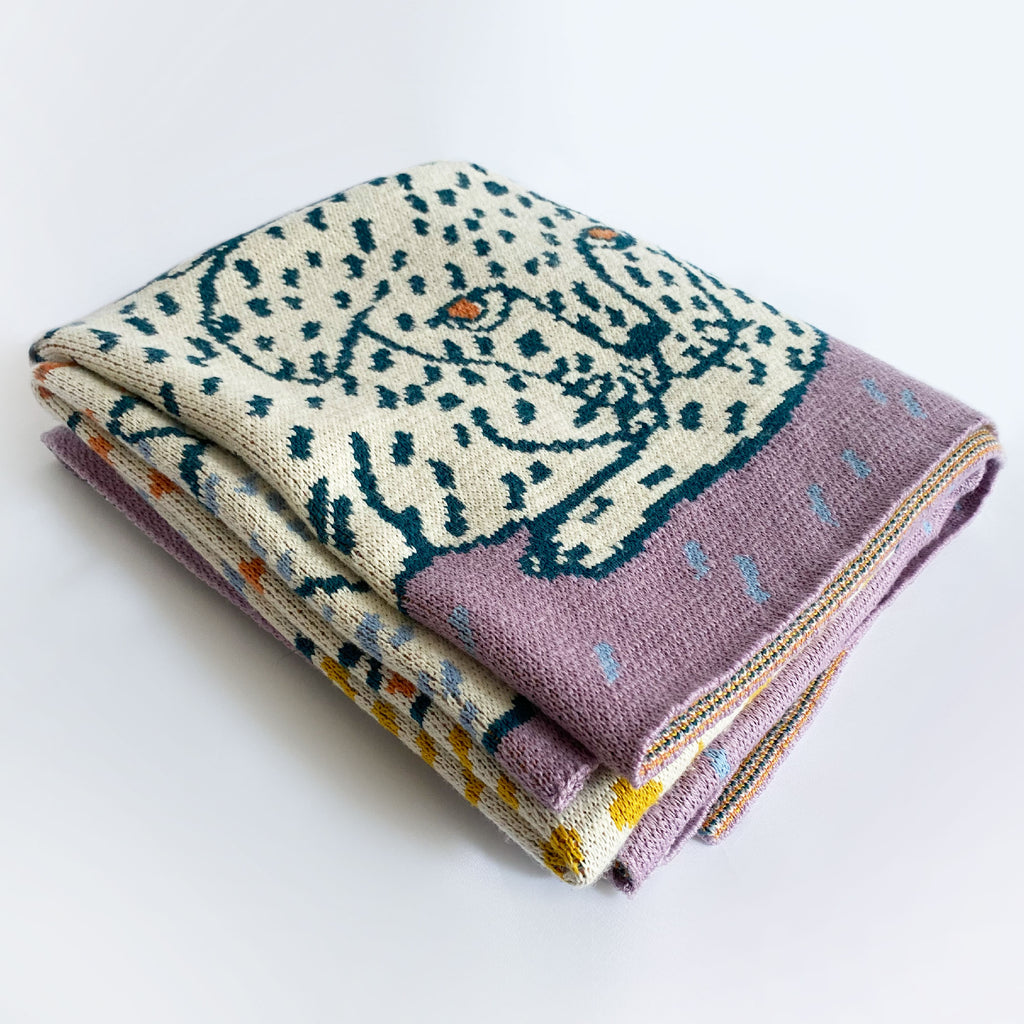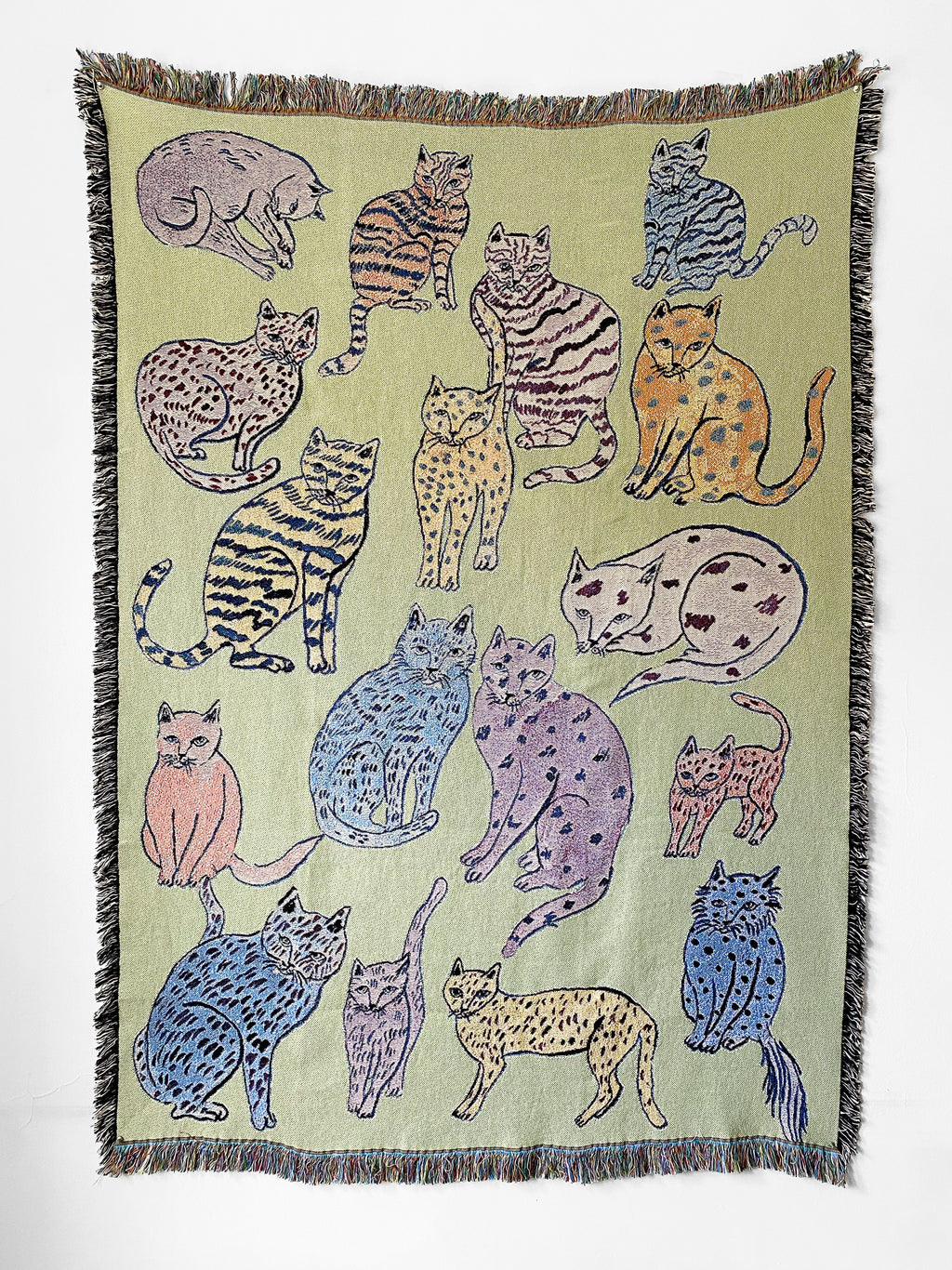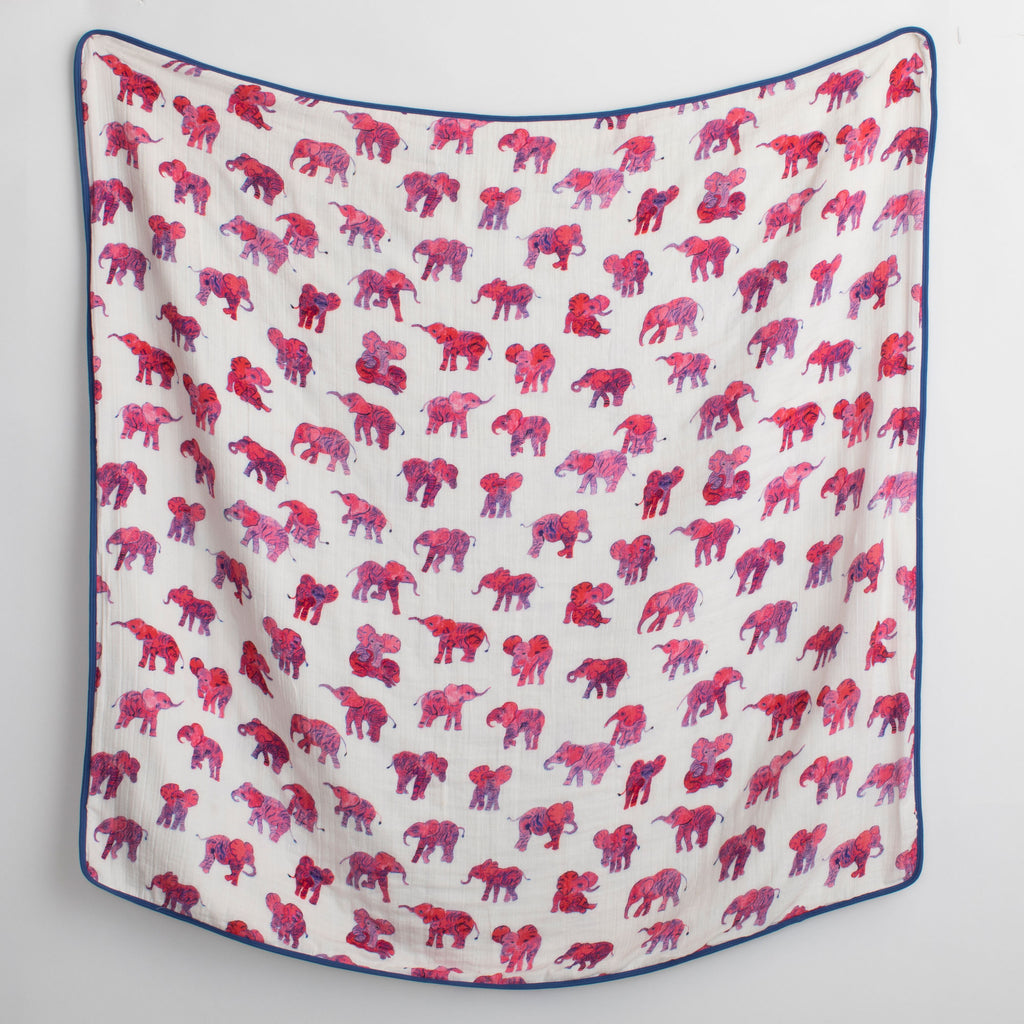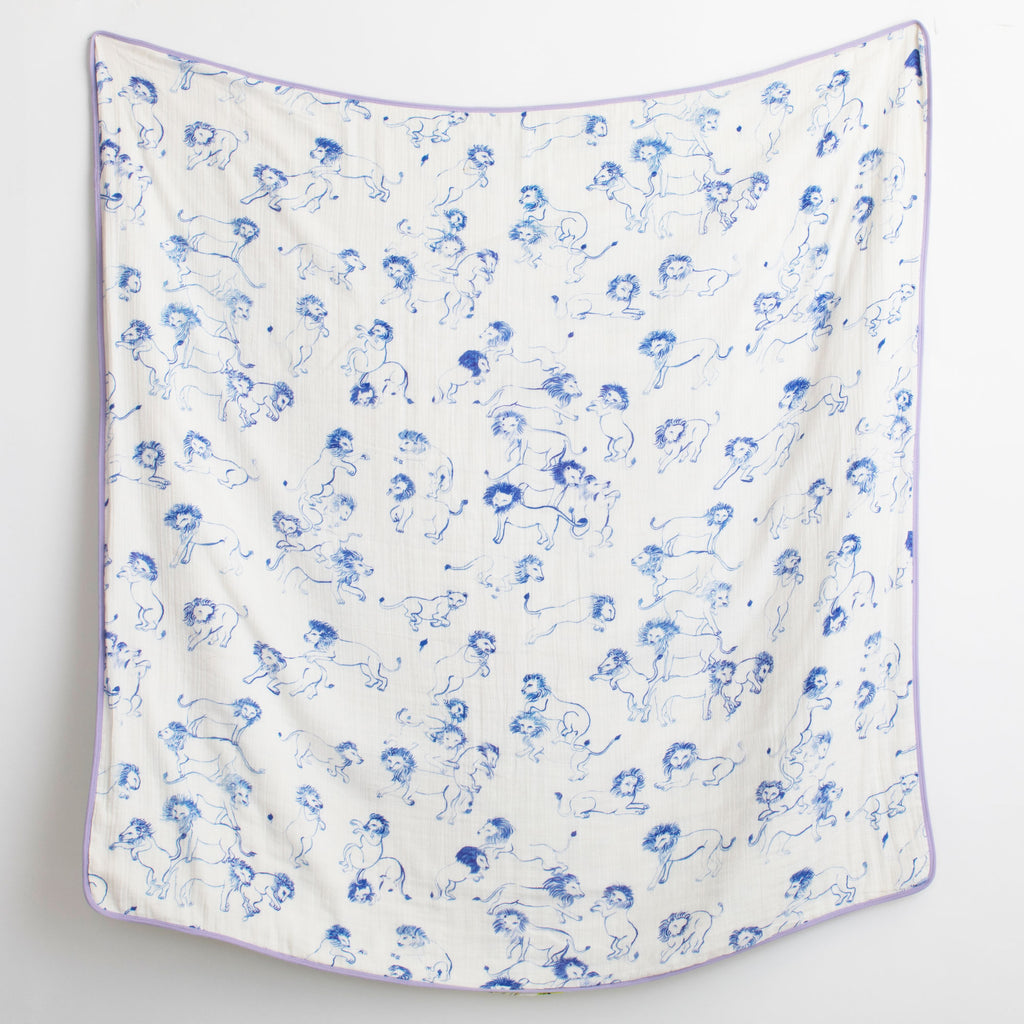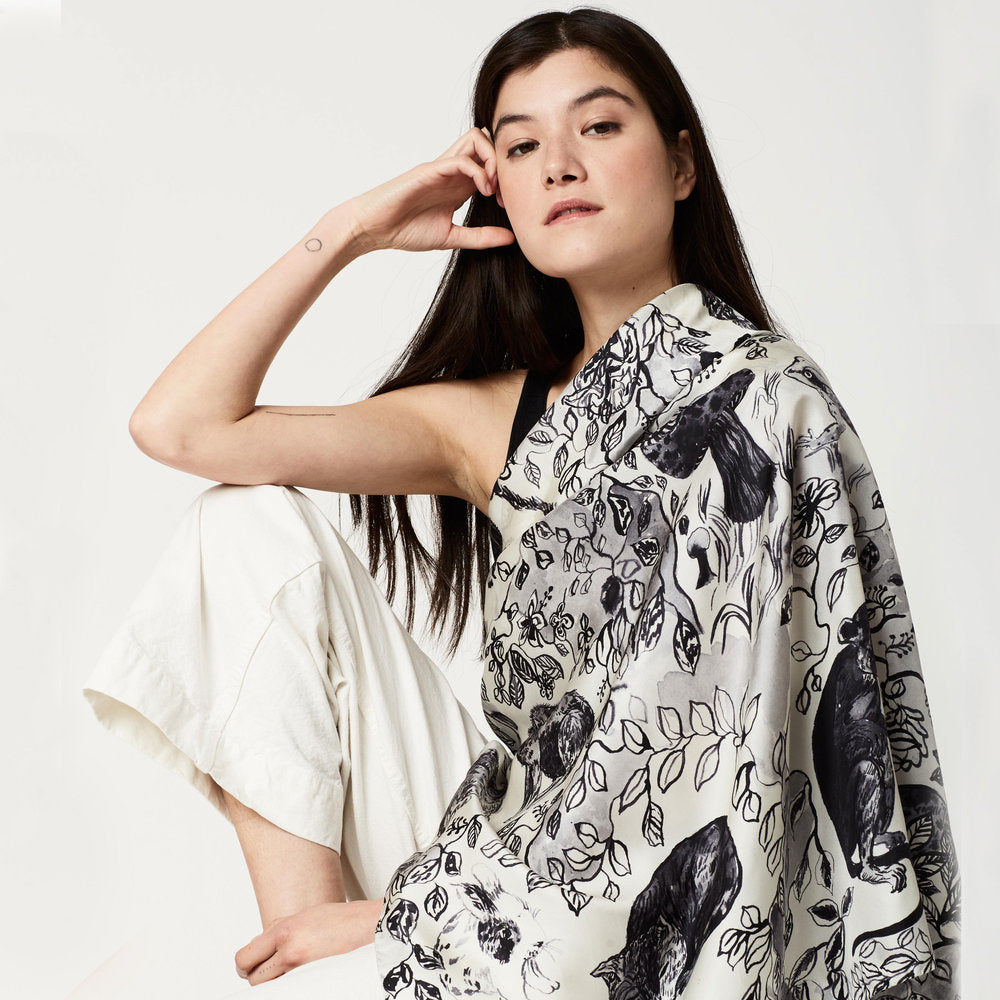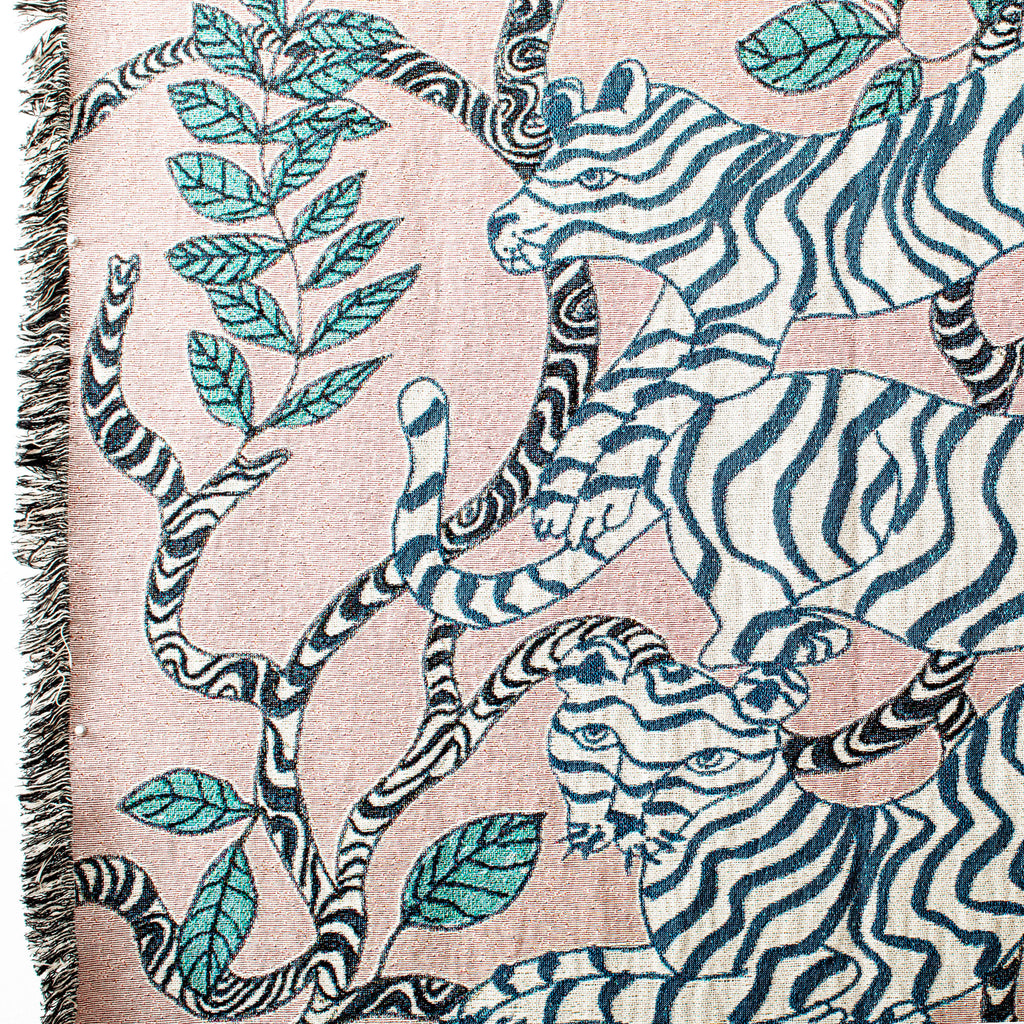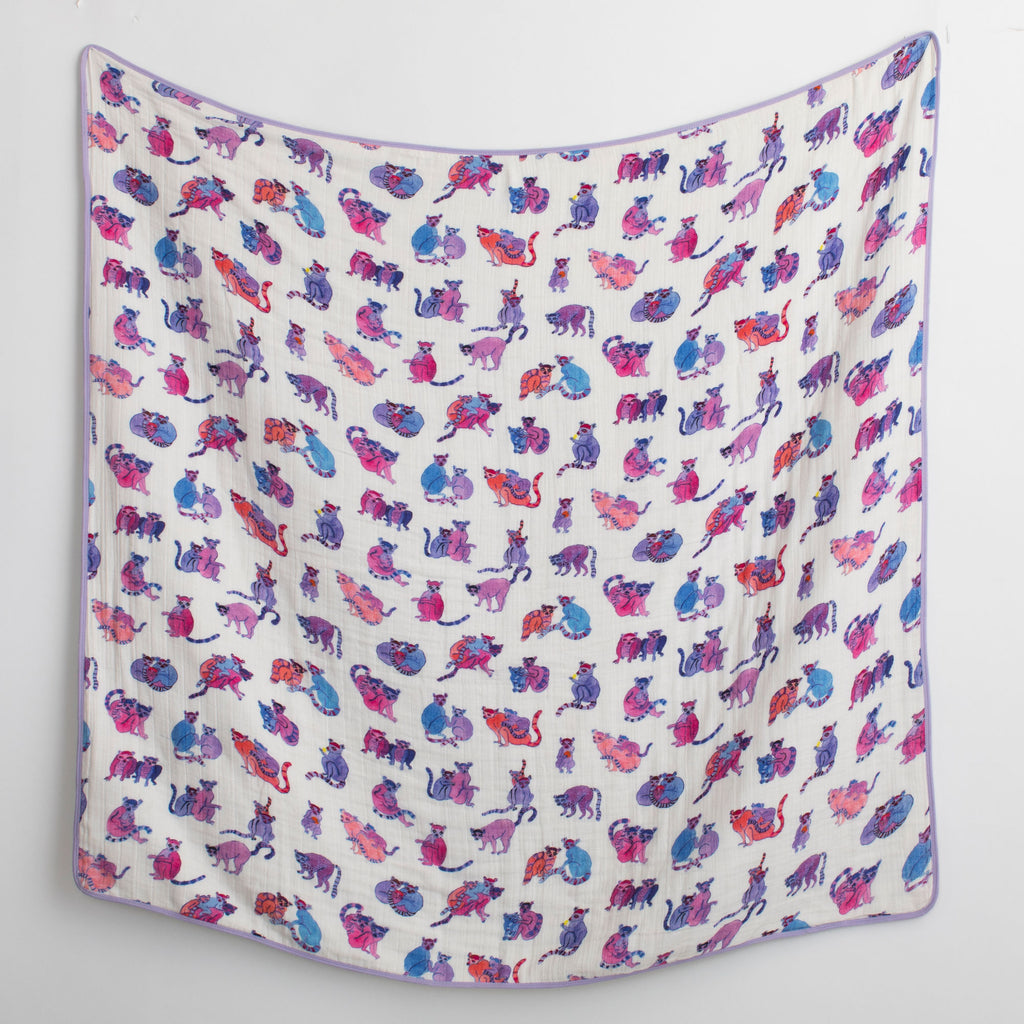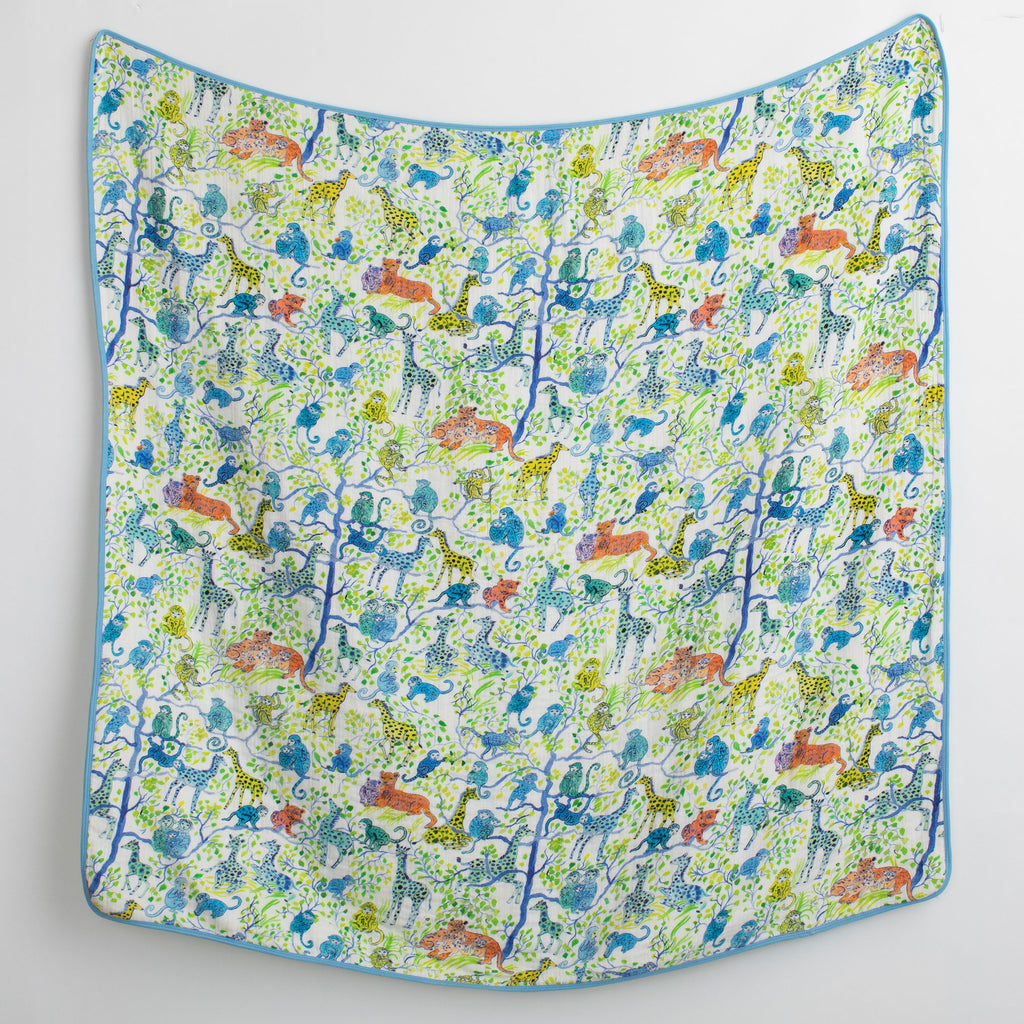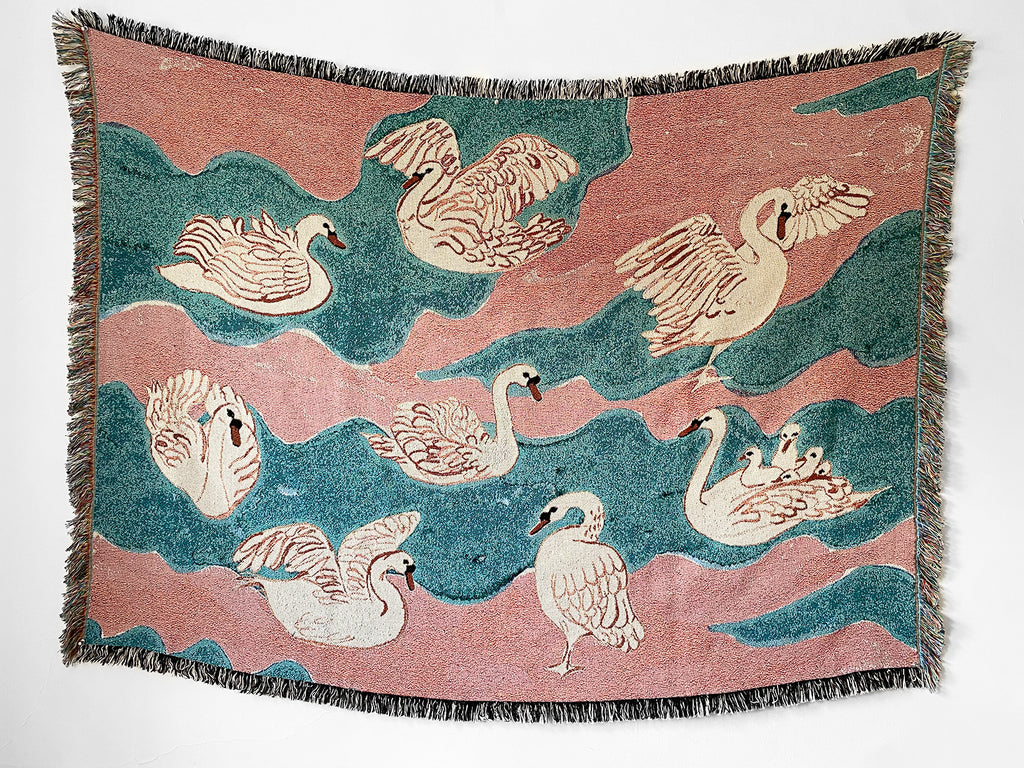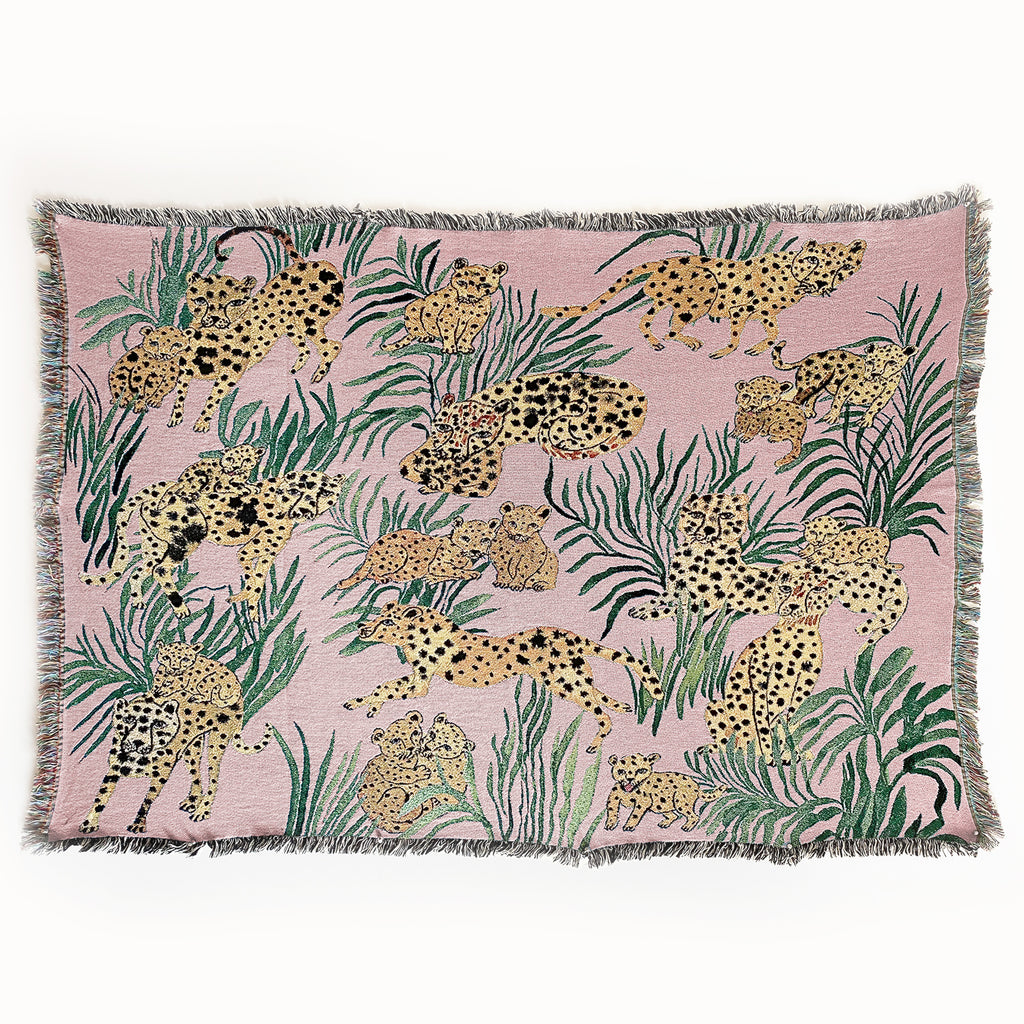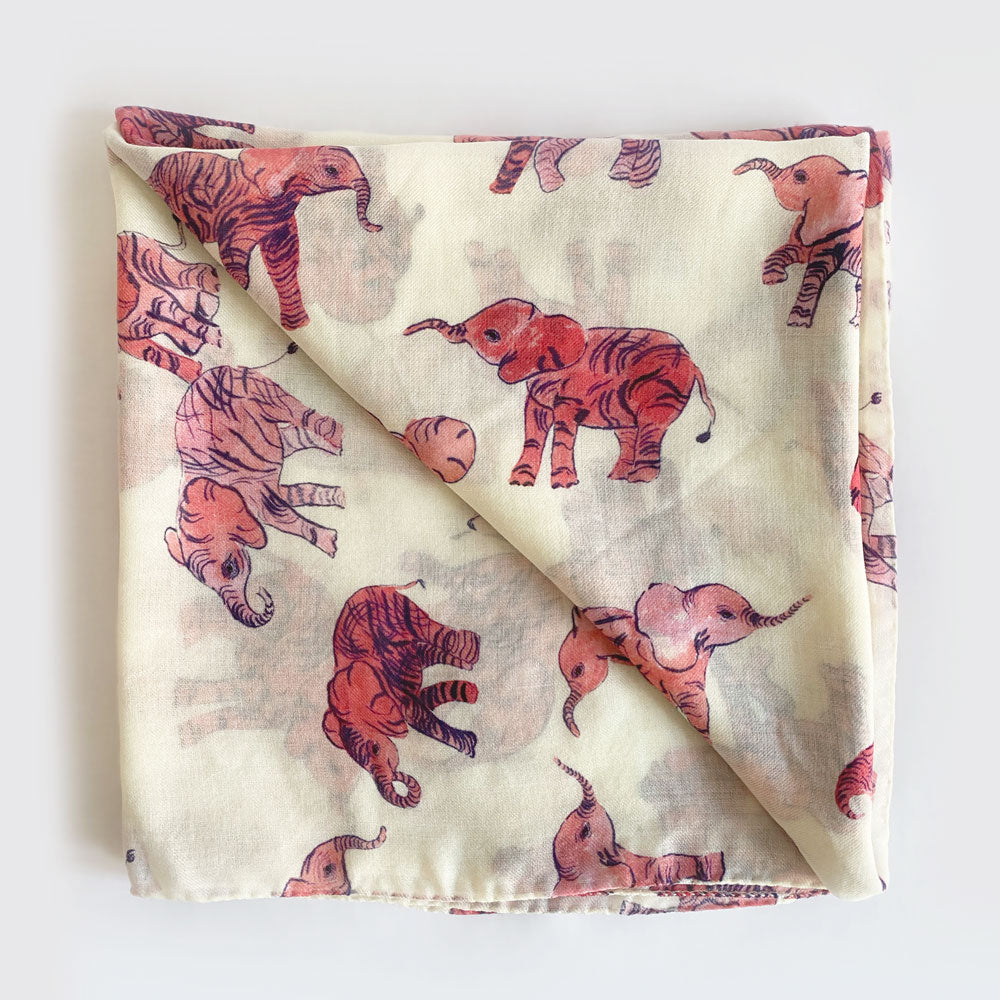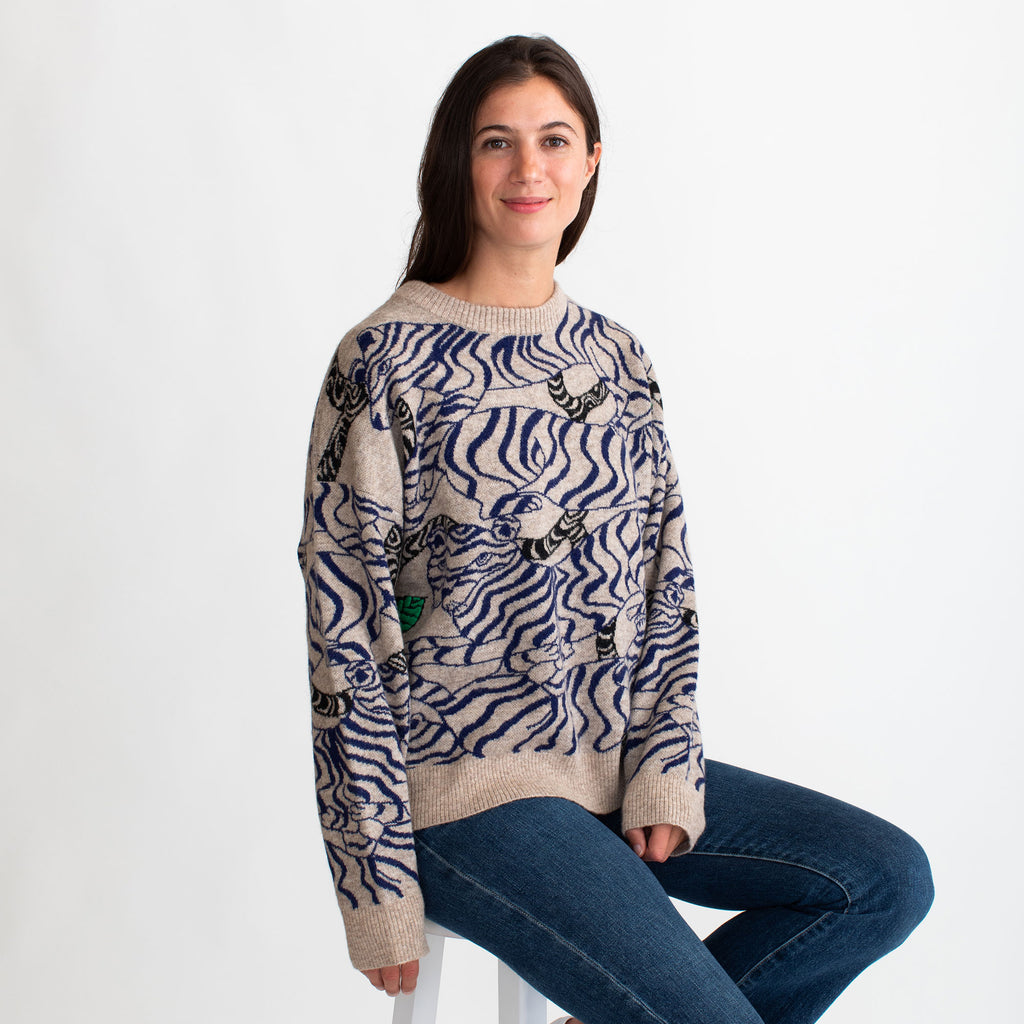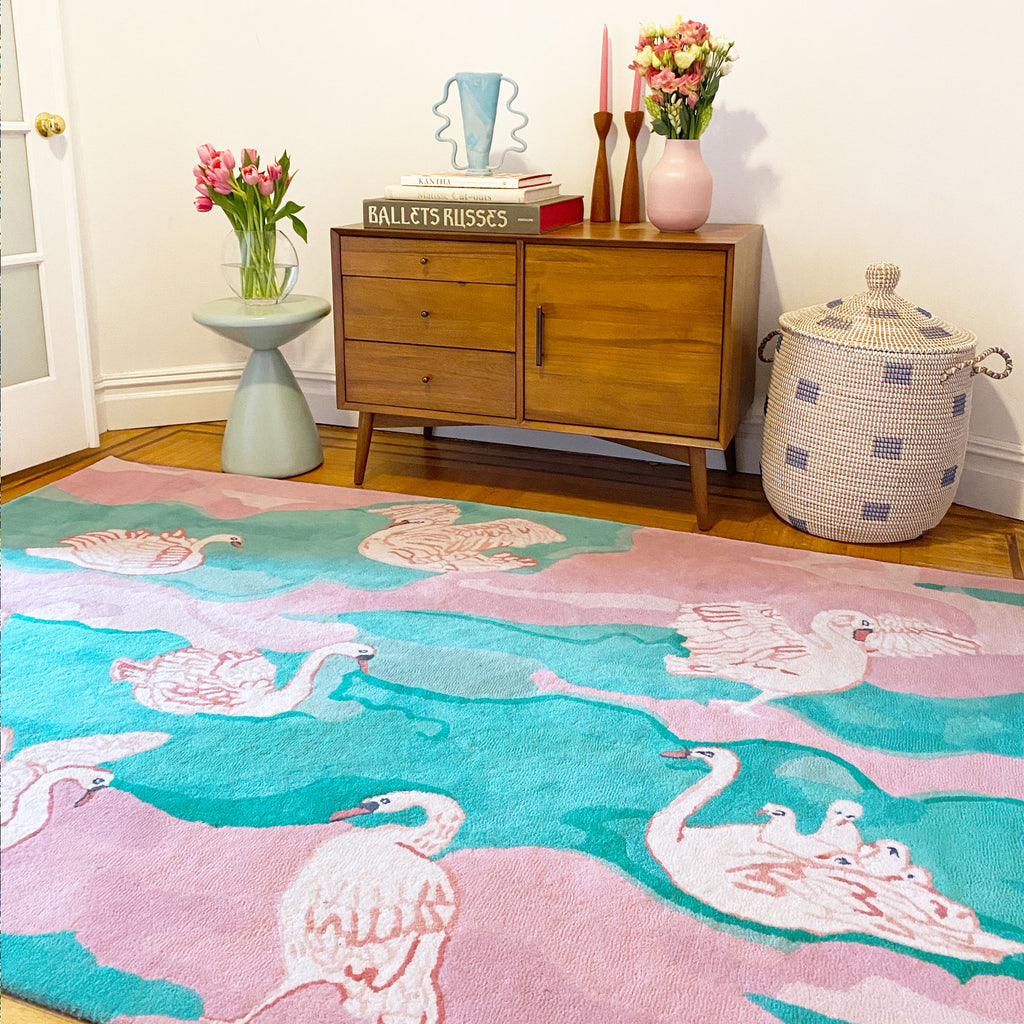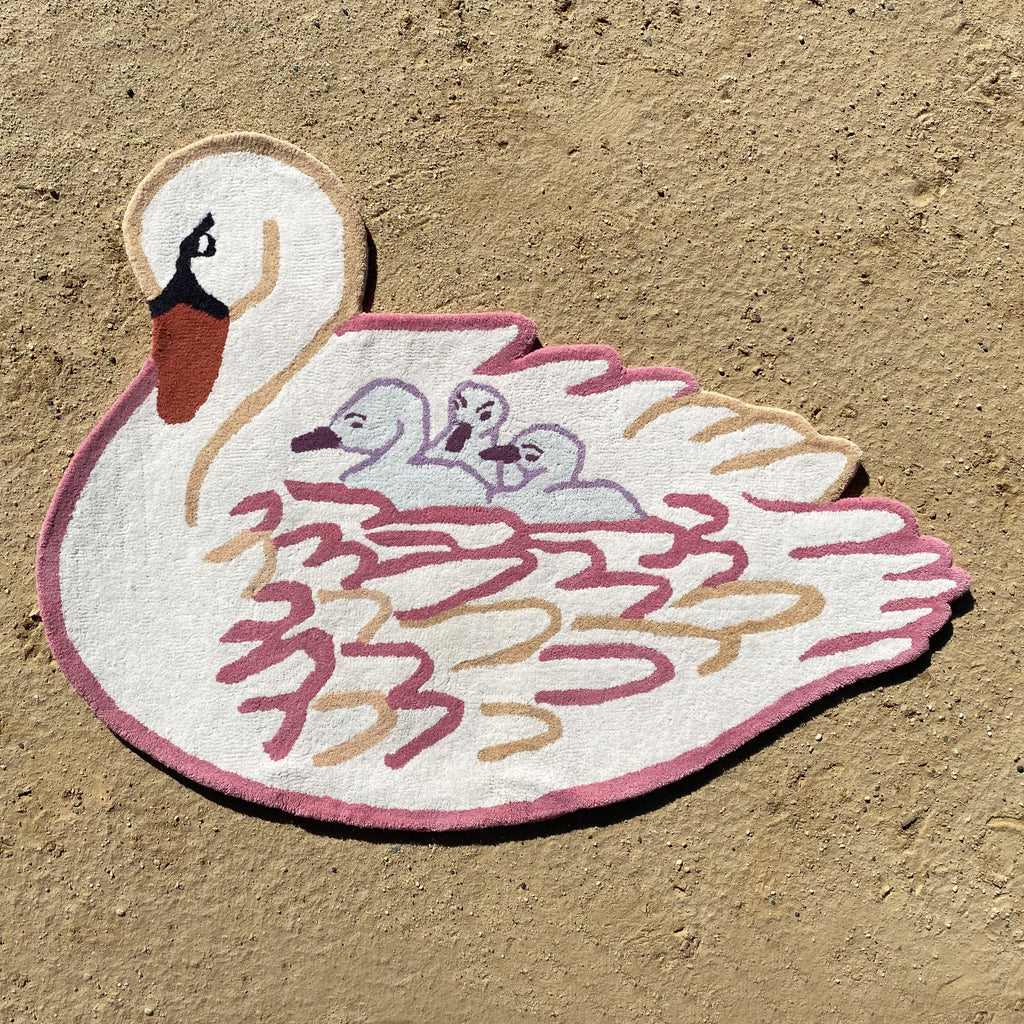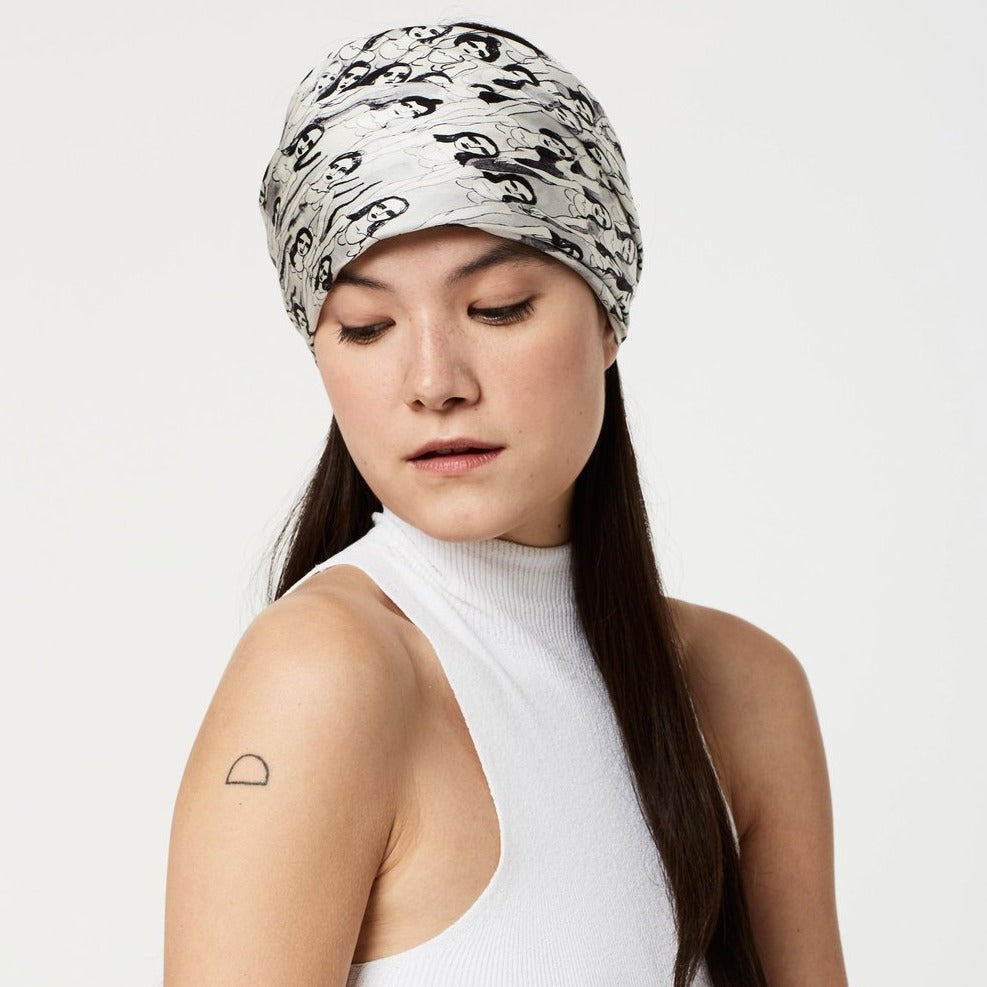Looking for tips on how to place a rug in a living room? This guide will show you simple and effective ways to position your rug, enhancing both style and functionality in your space. Let's transform your living room into a cozy, stylish haven with the perfect rug placement!
Why Rug Placement Matters
The appearance of a living room can be significantly altered by rug placement. A well-placed living room rug not only ties the room together but also enhances its overall look and feel. It acts as an anchor for your furniture, helping to define the space and create a cohesive look. When you place a rug correctly, it brings a sense of balance to the room, making your home feel more inviting and intentionally designed.
On the other hand, poorly placed rugs can disrupt the flow of your room, making it look chaotic and disjointed. Imagine walking into a room where the rug is either too small or awkwardly placed—it just feels off. Aesthetics and functionality both heavily rely on the proper placement of rugs. It helps in grounding the furniture, making the space feel more intimate and connected.
Moreover, rugs in high-traffic areas act as sound absorbers, reducing noise and making the room more pleasant to be in. This is particularly important in open-plan spaces where noise can easily travel.
To encapsulate, the significance of correct rug placement is paramount in creating an inviting, cohesive, and balanced space.
Different Ways to Position Your Rug

There are several ways to position a rug in your living room, each offering a unique aesthetic and functional benefit. Experimenting with different placements can create a visual bubble around your seating arrangement, frame the space, balance focal points, and define the line between the seating area and traffic flow. Whether you choose to place all furniture legs on the rug or just the front legs, or even center your coffee table on the rug, each method has its own charm.
Subsequent sections will delve into diverse rug positioning techniques, ranging from all furniture legs on the rug, to floating rug arrangements and round rug placements. Each approach offers a distinct way to enhance your living room’s look and feel.
All Furniture Legs on the Rug
Placing all furniture legs on the rug can create a unified and defined look. This method ensures that the rug serves as a cohesive anchor in the space, making the seating area feel more intimate and connected. It’s especially effective in larger living rooms where you want to bring all key furniture pieces together. To achieve this, choose a rug that is large enough to allow all furniture legs to sit comfortably on it.
For smaller rooms, ensuring that even the legs of smaller furniture pieces are on the rug can make a significant difference. Additionally, the rug should be at least 6 inches wider than the sofa on both sides to avoid spatial imbalance. This placement not only defines the seating area but also creates a sense of cohesion, making the room feel intentionally designed.
Front Legs Only on the Rug
Positioning only the front legs of your living room furniture on the rug is a popular technique that allows for more visible floor space, making the room appear larger. This method is particularly useful in smaller living rooms where you want to create a sense of openness without sacrificing the anchored look of the seating arrangement.
To achieve this, ensure that the front feet of sofas, sectionals, and loveseats sit on the area rug. This helps to center the seating area while still maintaining a balanced and grounded look. For sectionals, having the front legs of both sides on the rug works well.
Make sure the rug extends at least 3 inches behind the front legs of furniture pieces to ensure proper anchoring.
Coffee Table Centered on the Rug
Centering the coffee table on the rug is an excellent way to pull together the seating arrangement, especially in smaller living rooms. This method creates a focal point in the room, making the space feel more organized and intentionally designed.
Floating Rug Arrangement
Floating rug arrangements are particularly suited for rooms with unique furniture layouts or architectural features, making bedroom rug placement an essential aspect to consider. In this setup, the rug doesn’t strictly follow centering rules but rather aligns with specific elements like a fireplace or window to create a more dynamic room layout. Ensure at least 6 inches of floor space around the rug’s perimeter to maintain a sense of openness.
This arrangement allows for flexibility in design, making it ideal for spaces that don’t conform to traditional layouts. Whether you’re aligning the rug with a significant architectural feature or using it to highlight a unique furniture arrangement, the floating rug method can add a touch of sophistication and creativity to your living room.
Round Rug Placement
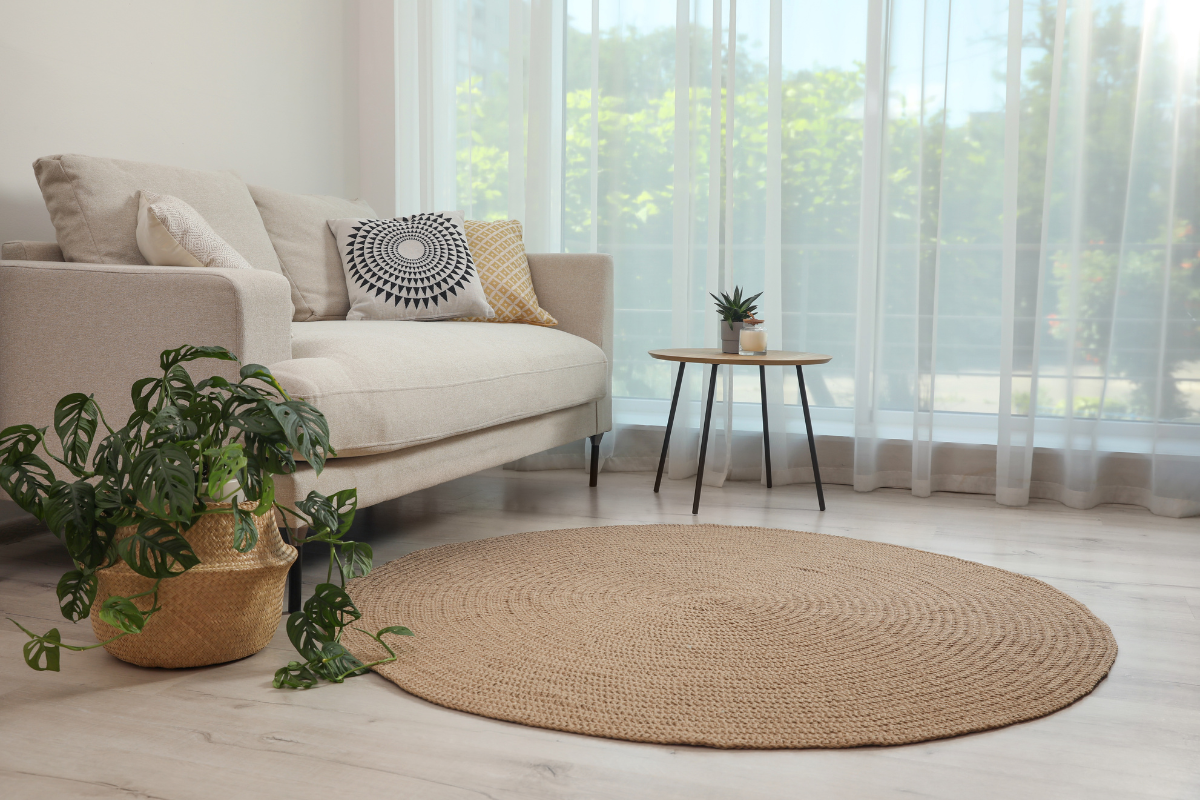
Round rugs are fantastic for:
-
Creating a focal point in your living room
-
Placing under a piece of furniture you want to highlight, such as a coffee table, to draw attention and enhance unity in the seating area
-
Creating cozy nooks or reading areas within a larger room
Round rugs work well when placed under round tables or in the center of seating clusters to enhance a sense of unity. They can add a unique and playful element to your living room, breaking up the monotony of rectangular and square shapes and creating a dynamic visual interest with a rug centered approach.
Choosing the Right Rug Size for Your Living Room
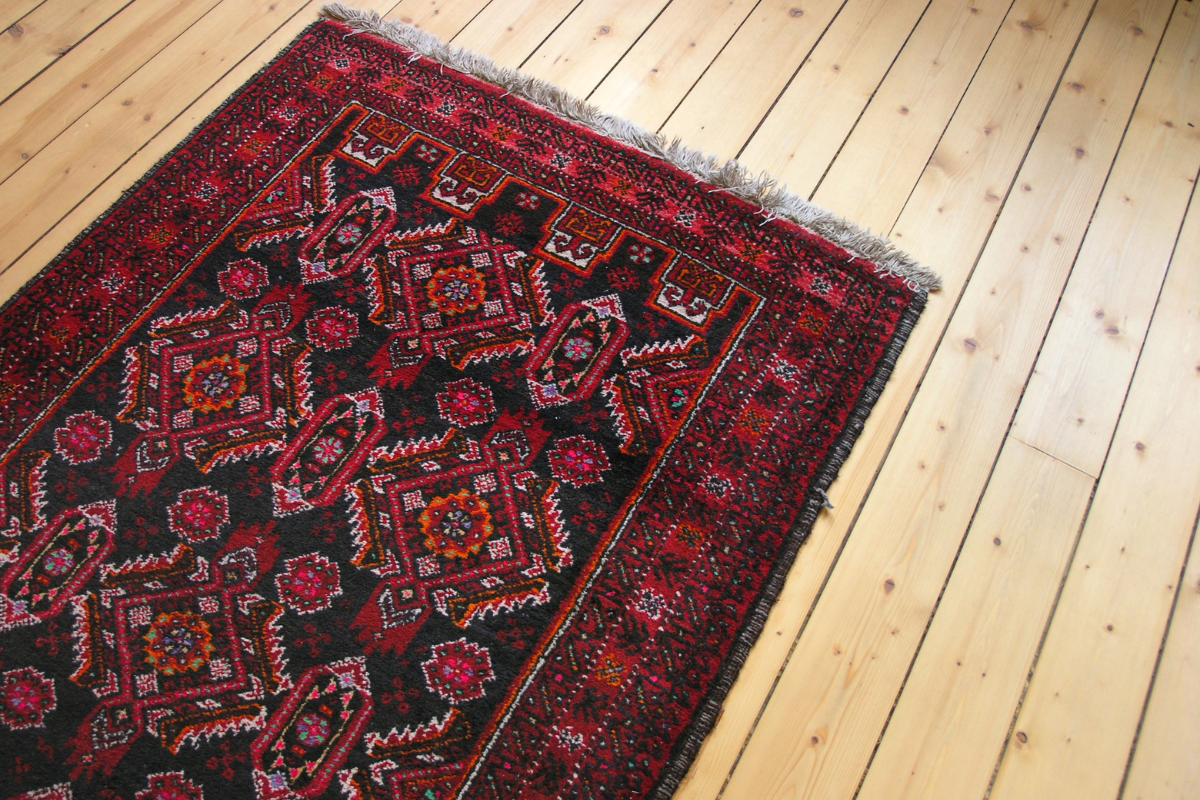
Choosing an appropriate rug size is key to establishing a harmonious and unified appearance in your living room. The general rule is to choose the largest size that can elegantly fit within your space. Typical rug sizes for living rooms are 8’x10’ and 9’x12’, which offer a balanced look and fit well with most furniture arrangements. For smaller living rooms, a 6’x9’ rug is often ideal.
Before purchasing a rug, it is vital to measure your space to guarantee a perfect fit without crowding the room. Avoid using a 5’x8’ rug in most living rooms as it often ends up floating beneath the coffee table, making the space look smaller and disjointed. Make sure your rug is at least 6 inches wider than your sofa on both sides to create a cohesive and proportional look.
Measuring Your Space
Accurate measurement of your space is key to avoiding future rug replacement and assuring the rug fulfills its intended role in the room. One practical tip is to use painter’s tape to create a mock-up of the rug’s dimensions on the floor. This helps you visualize how the rug will fit within your space and make adjustments as needed.
Run painter’s tape on the floor to outline the rug size before making a purchase. This simple yet effective method can save you from the hassle of buying a rug that is either too small or too large for your living room.
Ideal Rug Sizes for Different Room Dimensions
Choosing the ideal rug size depends on your living room dimensions. Here are some recommendations:
-
For small living rooms, an 8’x10’ rug is recommended, with only the front legs of the furniture on top of it.
-
Medium living rooms can also benefit from an 8’x10’ rug, or even a larger 9’x13’ rug to frame the space.
-
For larger living rooms, a 9’x12’ rug is ideal as it provides ample space for all furniture legs to sit comfortably on the rug.
Alternatively, in large rooms, you can opt for a smaller rug that is 12 to 18 inches smaller than the room dimensions, allowing every piece of furniture to be placed on the bedroom rug while still maintaining a sense of openness and balance.
Avoiding Common Rug Sizing Mistakes
One of the most common mistakes is choosing a rug that is too small for the space. A rug that is too small can cause it to float beneath the coffee table, making the room feel disjointed and unbalanced. To avoid this, ensure the rug is proportionate to the size of the room and the furniture arrangement.
Another mistake to avoid is crowding all furniture onto the rug, which can make the space look cluttered and create visual tension. If the suggested rug sizes don’t fit your home dimensions, you can still follow the same placement principles and choose a rug according to your living room and furniture dimensions. This will ensure a better fit and aesthetic appeal.
Enhancing Your Living Room with Multiple Rugs
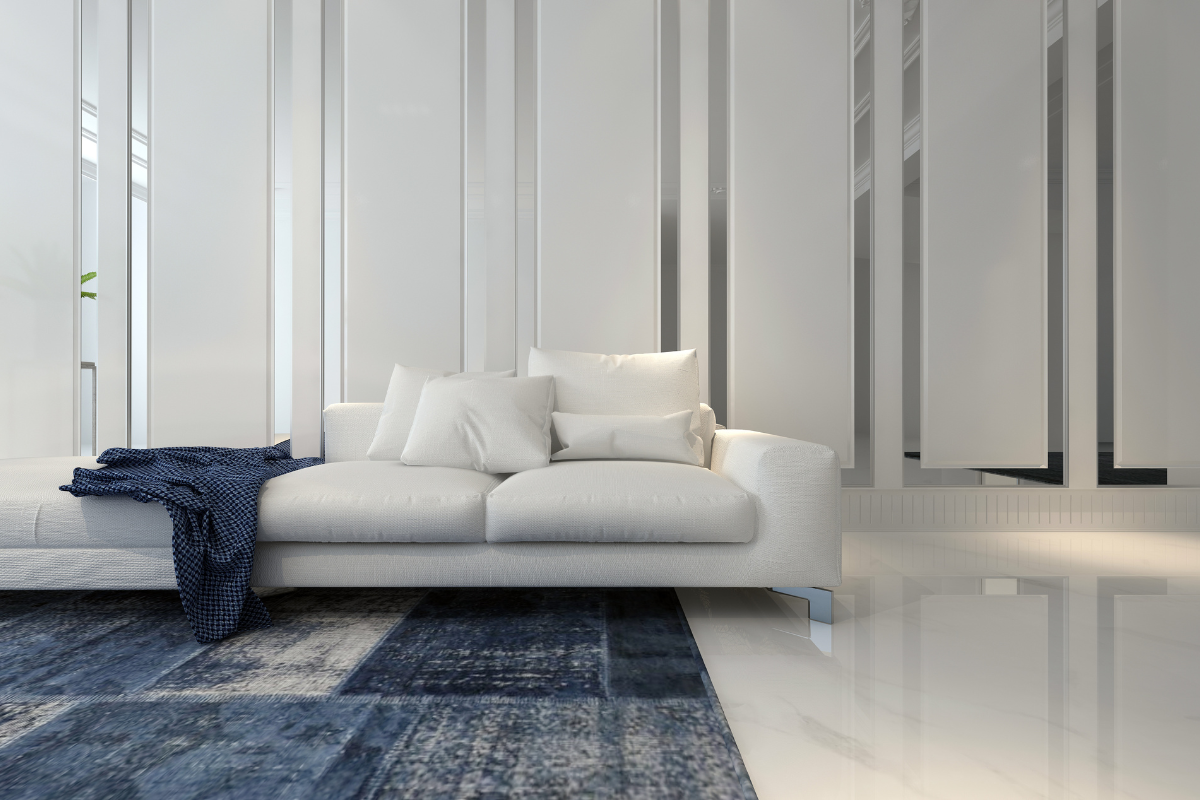
Employing more than one rug, with varying patterns, sizes or colors, can enhance the overall aesthetics of your living room. Multiple rugs can help define separate zones within a large space, making the room feel more organized and cohesive. This approach allows for a versatile design, enabling seasonal or mood-based changes in the room’s appearance.
Subsequent sections will delve into strategies for layering rugs for additional texture and depth, and using rugs to distinguish different areas within your living room.
Layering Rugs
Layering rugs can significantly enhance the design of your living room by adding texture and depth. Combining different textures, such as placing a soft rug over a natural fiber base, can add both visual and tactile interest. For instance, using contrasting textures between rugs, like a plush carpet on a thin solid rug, can create a visually appealing aesthetic.
Experiment with angles by placing the top rug at a 45-degree angle to create dynamic visual lines in the room. Mixing modern and vintage rug styles can keep the design fresh and interesting. For a more subtle layered design, use classic rug patterns and neutral textures.
Using Rugs to Define Different Areas
Using multiple area rugs to demarcate different areas can help create distinct zones for seating, dining, or other activities within a large living room. This approach can visually break up a large room, offering a more intimate and cozy feel. For example, combining a patterned rug with a solid rug works well to define separate spaces within a room.
Different rug shapes can refine and add a visual dimension to a large living space. By strategically placing rugs, you can create a well-organized and aesthetically pleasing environment that serves multiple functions.
Practical Tips for Rug Placement
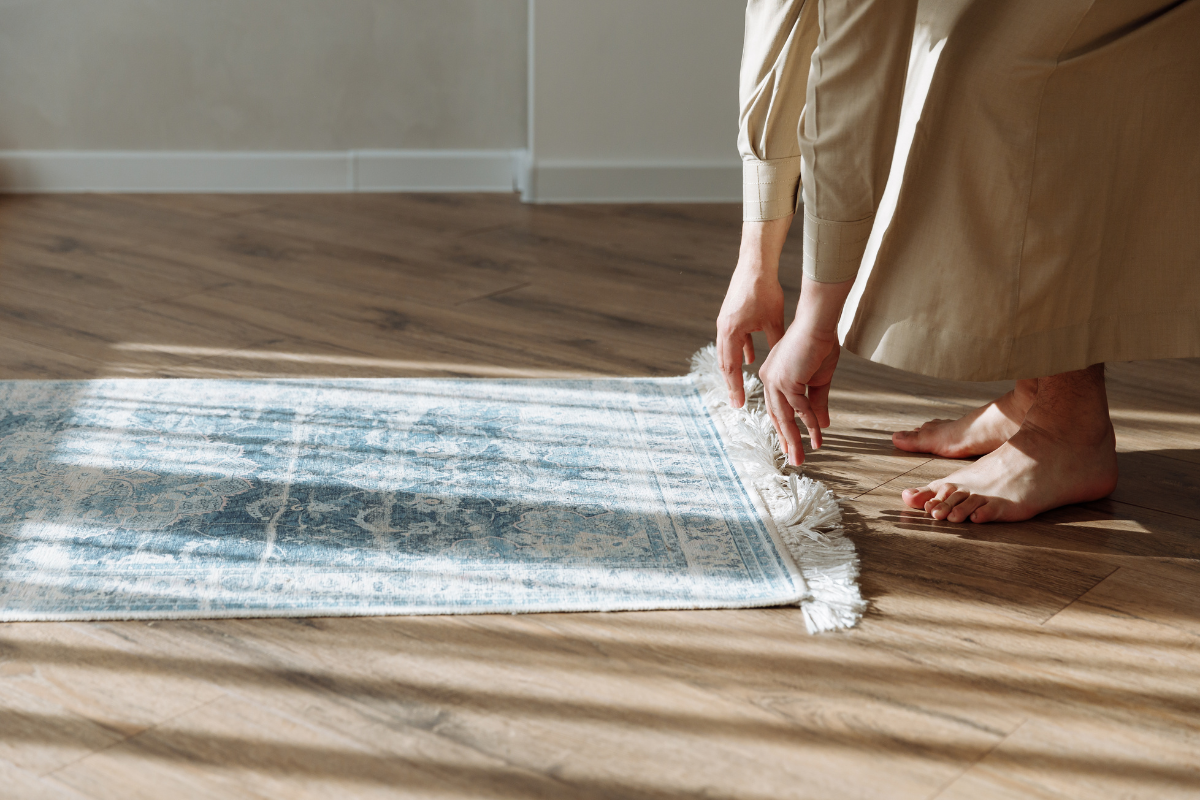
Strategically placing rugs according to practical tips can noticeably alter the ambiance and appearance of your living room. One crucial tip is to anchor the main furniture grouping with a rug to create a cohesive look. Properly balancing a rug under the main furniture grouping anchors the seating arrangement and creates visual balance.
Subsequent sections will discuss strategies for maintaining distance between rugs and walls, covering high-traffic areas, and balancing rugs under furniture for optimal outcomes.
Keeping Rugs Away from Walls
One of the essential tips for rug placement is to maintain a 12-18 inch gap between the rug and the wall. This creates a sense of openness in the room, making it appear larger and more inviting. Placing a rug too close to the wall can make the space feel cramped and cluttered. By ensuring an equal gap all around, you achieve a balanced and visually appealing look.
For large rooms, leaving 10 to 18 inches from the rug’s edge to the wall can help maintain a sense of proportion and avoid overwhelming the space. This rule also applies to architectural features such as doorways and fireplaces, where keeping a 12-inch gap can enhance the room’s overall aesthetic.
Cover High-Traffic Areas
Placing rugs in high-traffic areas is essential to:
-
Protect your floors and reduce wear patterns
-
Distribute wear evenly, preventing specific spots from becoming overly worn
-
Reduce noise
-
Add comfort, making high-traffic zones more pleasant to walk through.
This is particularly useful in rooms that serve as thoroughfares, where floor damage can occur quickly.
Balancing Rugs Under Furniture
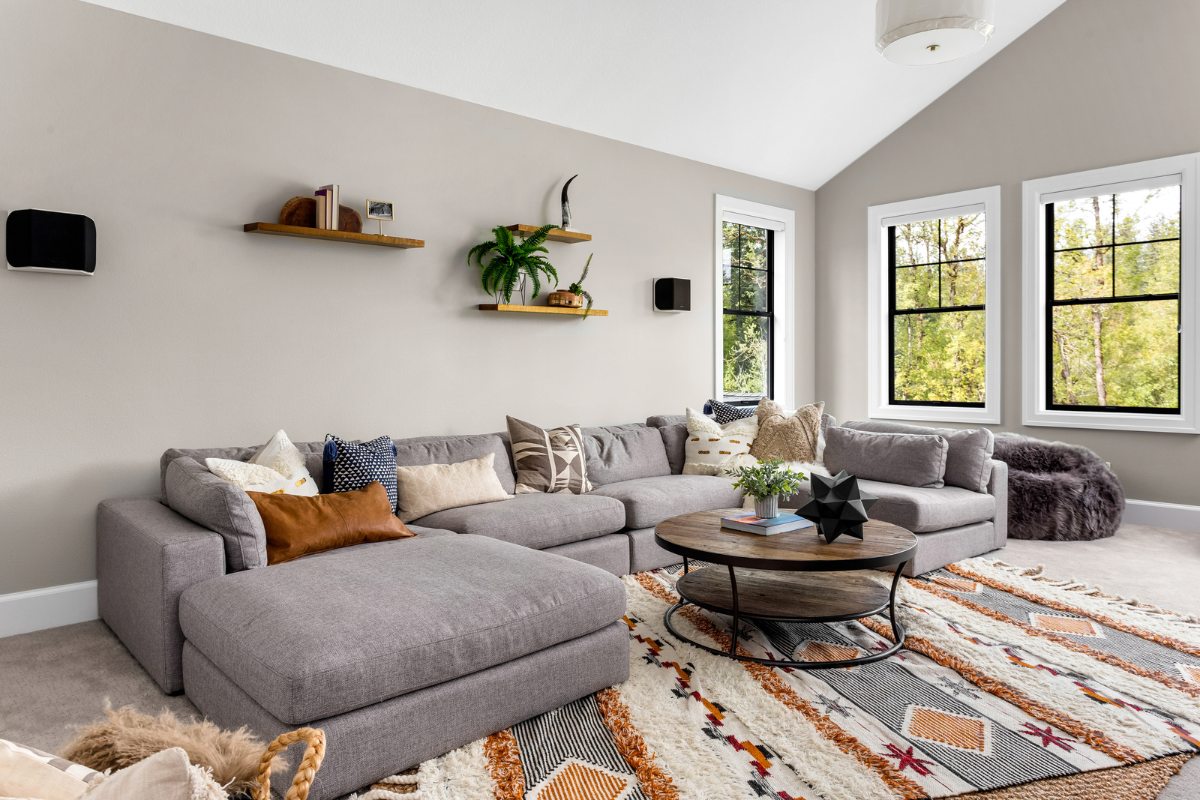
Balancing rugs under furniture is crucial for creating harmony in your living room. Ensure there is a walkway of 30 to 36 inches between large furniture pieces if space allows, to promote balance and facilitate movement. This not only helps in organizing the space but also in maintaining a clear path for easy navigation.
Properly anchoring all your furniture with a rug creates a cohesive look and prevents the room from feeling disjointed. By aligning the rug with key furniture pieces, such as the sofa and coffee table, you create a well-organized and inviting space that feels complete and intentional.
Rug Placement in Special Living Room Layouts
Unique living room layouts, like open floor plans or rooms with unusual shapes, necessitate considered rug placement for maintaining functionality and style. In open floor plans, rugs can be used to create distinct zones within the space, providing a sense of order and functionality. For oddly shaped rooms, incorporating runners or asymmetrical rugs can help establish a focal point and reduce confusion from sharp angles or multiple corners.
The upcoming sections will delve into particular strategies for positioning rugs in open floor plans and rooms with irregular shapes.
Open Floor Plans
In open floor plans, distinctive rugs for different sections can create a sense of order and functionality. For instance, a large rug in the seating area can define the living room space, while a contrasting rug in the dining area can visually separate the dining room from the living room, showcasing proper dining room rug placement. This placement is great for subtly differentiating between areas without solid barriers.
Using a consistent color scheme while mixing patterns can help define separate areas within an open floor plan. Coordinating colors in different rugs ties the styles together, creating a cohesive look that complements the surrounding furniture and decor. Additionally, juxtaposing patterns within a consistent palette provides a sense of contrast and interest.
Oddly Shaped Rooms
Incorporating rugs in oddly shaped rooms can be quite the challenge but also an opportunity to add intrigue and dimension. Using asymmetrical rugs can effectively fit the space and add visual interest. These rugs help establish a focal point and reduce confusion from sharp angles or multiple corners.
Consider using runners to guide the flow of movement through the room and highlight architectural features. By strategically placing rugs in an oddly shaped room, you can create a cohesive and well-organized space that feels both functional and stylish.
Maintaining and Caring for Your Rugs

Proper maintenance and care of your rugs is vital for preserving their beauty and functionality over the years. Here are some tips to keep in mind:
-
Regular vacuuming is essential to remove dry soil and debris, especially in high-traffic areas.
-
A suction-only canister vacuum is ideal to prevent pilling, fuzzing, and pulls on rugs.
-
Using a lint roller can help capture the last remaining crumbs, hairs, and particles.
By following these tips, you can ensure that your rugs stay clean and in good condition.
Treat stains immediately by blotting spills with white paper towels or a clean cloth to prevent difficult stains. For liquid spills, blot the spot with a clean, absorbent cloth to prevent dirt from rising to the surface and causing a dark stain. Periodically taking your rug to a professional cleaner can help restore it to its original condition and prolong its lifespan.
Summary
In conclusion, proper rug placement is an art that can significantly enhance the aesthetics and functionality of your living room. From choosing the right size to experimenting with different positioning techniques and maintaining your rugs, each step plays a crucial role in creating a space that feels balanced, cohesive, and inviting.
Remember, a well-placed rug is more than just a decorative element—it’s the foundation of a beautifully designed living room. So, go ahead and transform your space with the perfect rug placement!
Frequently Asked Questions
How do I choose the right rug size for my living room?
To choose the right rug size for your living room, measure your space and opt for the largest rug that fits elegantly, such as 8'x10' or 9'x12', to avoid it looking too small.
Should all my furniture legs be on the rug?
It's a matter of personal preference, but placing all furniture legs on the rug can create a cohesive and unified look in the room. Alternatively, placing only the front legs on the rug can help make the room appear larger.
How can I use multiple rugs in my living room?
You can use multiple rugs to define different areas within your living room or to add texture and depth to the space. This can help create a more visually interesting and cohesive design.
How do I maintain and care for my rugs?
To maintain and care for your rugs, regularly vacuum, treat stains promptly, rotate them for even wear, and consider professional cleaning for thorough maintenance.
What are some common rug sizing mistakes to avoid?
To avoid common rug sizing mistakes, make sure the rug is proportionate to the room and furniture arrangement. Choosing a rug that is too small can make the room feel disjointed.


